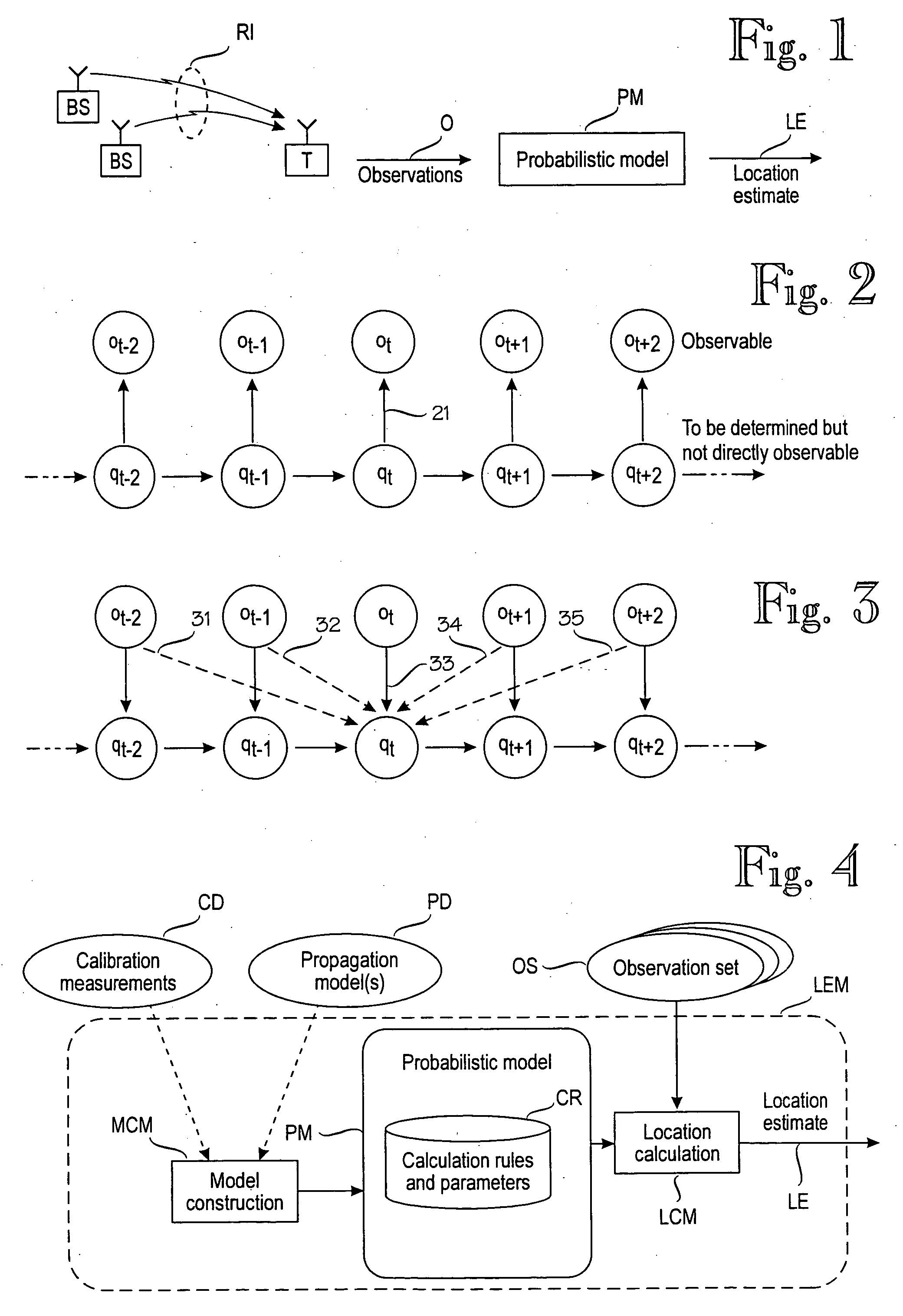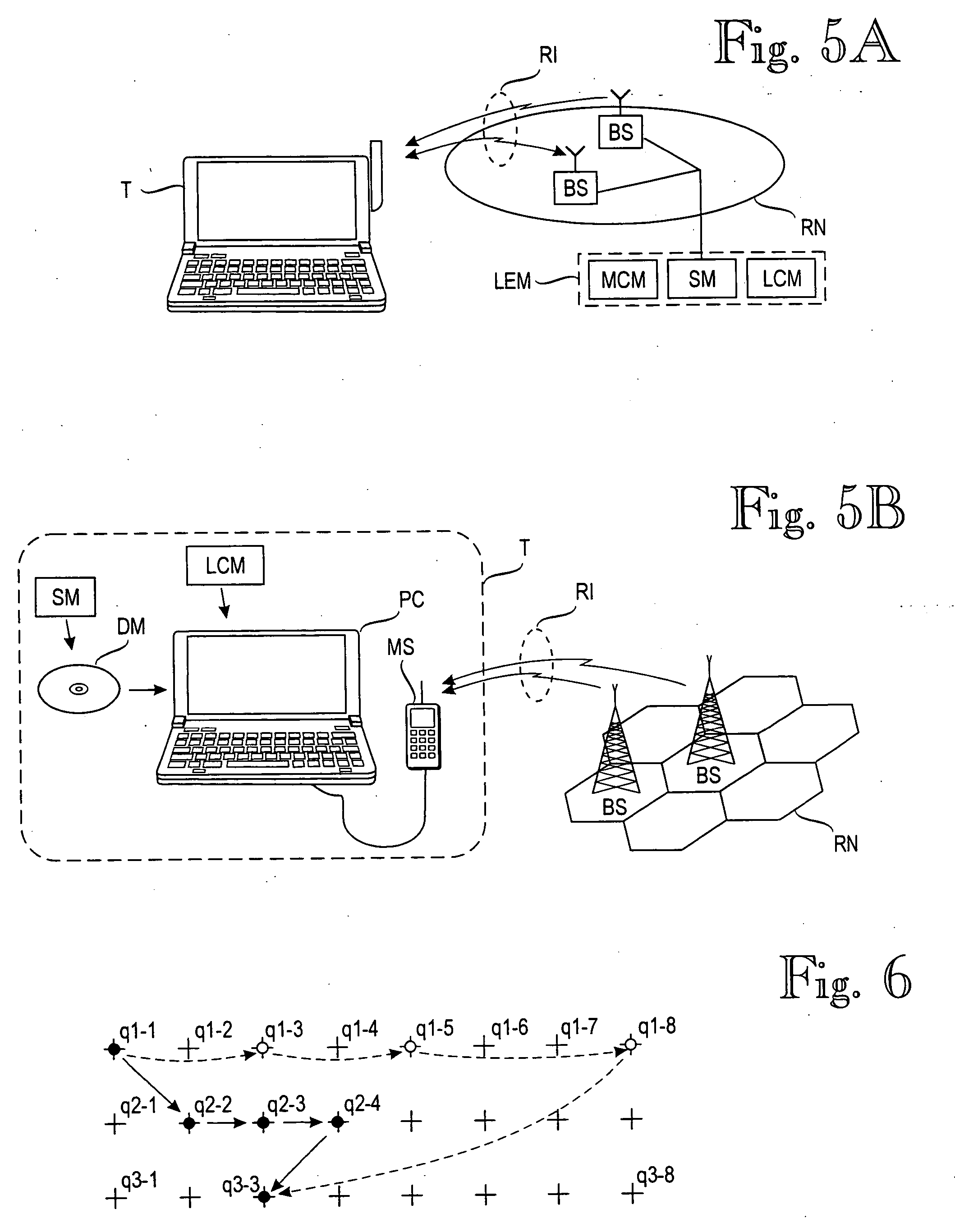Sequence-based positioning technique
a positioning technique and sequence technology, applied in the field of positioning techniques, can solve the problems of absurd ideas and store owners who are not interested in accurately determining the most recent locations, and achieve the effects of reducing uncertainty, reducing uncertainty, and reducing uncertainty
- Summary
- Abstract
- Description
- Claims
- Application Information
AI Technical Summary
Benefits of technology
Problems solved by technology
Method used
Image
Examples
performance example
[0050] The following detailed calculations demonstrate how, at least in some situations, the invention can improve positioning accuracy even in real-time positioning. In some situations, the improvement may be significant. The following table 1 contains observation probabilities for locations A to F at (discrete) times t=1 to 5. Bold values show the observation probabilities of the real path A,B,D,E,F at each time step. Note that although the real location at time t=3 is D, location C has a higher observation probability. Hence, positioning based only on the current observation probabilities would fail at that point. Table 2 contains transition probabilities between locations A to F. Tables 3 to 5 contain. normalized calculation results for forward, backward. and two-way recursions (equations 3, 4 and 2), respectively. Again, probabilities of real locations at each time step are shown in bold text. Table 6 shows probabilities for locations A to F at time t=3.
TABLE 1observation pro...
PUM
 Login to View More
Login to View More Abstract
Description
Claims
Application Information
 Login to View More
Login to View More - R&D
- Intellectual Property
- Life Sciences
- Materials
- Tech Scout
- Unparalleled Data Quality
- Higher Quality Content
- 60% Fewer Hallucinations
Browse by: Latest US Patents, China's latest patents, Technical Efficacy Thesaurus, Application Domain, Technology Topic, Popular Technical Reports.
© 2025 PatSnap. All rights reserved.Legal|Privacy policy|Modern Slavery Act Transparency Statement|Sitemap|About US| Contact US: help@patsnap.com



